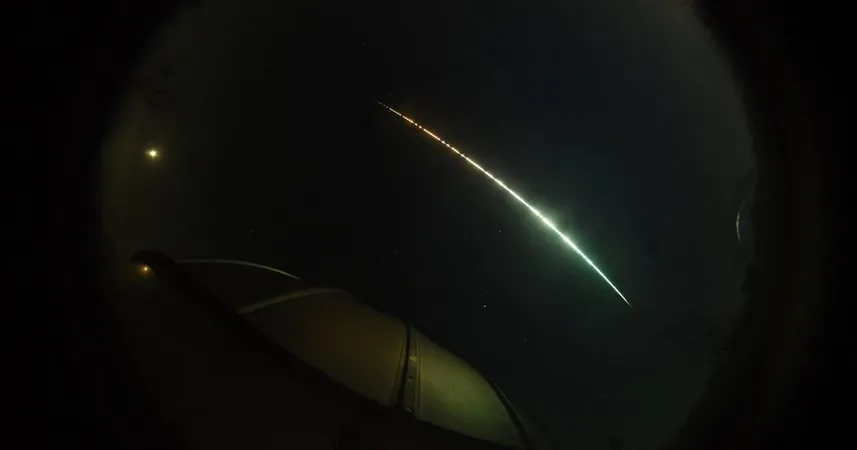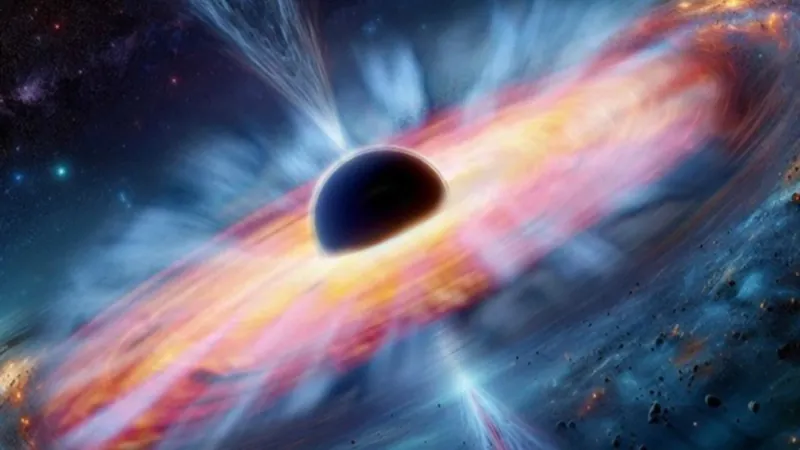
Smallest Asteroid Ever Measured Stuns Astronomers with Fiery Display Over Niagara Falls
2024-11-29
Author: Benjamin
In an astonishing celestial event, a meteor that exploded in a fiery spectacle over Niagara Falls in November 2022 was revealed to be the smallest asteroid ever measured, according to a recent study.
Dubbed 2022 WJ1, this diminutive space rock was detected only hours before its dramatic entry into Earth's atmosphere, measuring about the size of a house cat. As it raced toward Earth, the asteroid disintegrated amidst the heat of friction when it pierced the lower atmosphere, resulting in an incredible fireball that lit up the Canadian sky.
Witnesses described the event as a breathtaking sight, with a brilliant streak of green light visible from as far away as New York and Pennsylvania. The excitement peaked when a sonic boom erupted near Ontario, adding to the awe of this cosmic encounter.
Astronomers had been closely monitoring 2022 WJ1's trajectory and quickly deployed instruments to capture the moment as it hurtled toward Earth. Initial assessments suggest that most fragments of the asteroid likely fell into Lake Ontario, while some of its main mass may have crashed onto land. Despite thorough searches, no meteorites have been recovered as of the summer of 2024. Scientists encourage locals in the St. Catharines area to continue their quest, as they believe the primary fragment could still be embedded in the ground.
The data collected during this event allowed astronomers to analyze the asteroid's light spectrum, providing insights into its chemical makeup. Preliminary estimates indicate that 2022 WJ1 was around 40-60 cm in diameter and weighed approximately 220 kg before fragmenting, solidifying its status as the smallest asteroid characterized in space to date.
This research represents a significant advancement in our understanding of asteroids, employing a novel combination of telescope and meteor camera data to analyze these celestial bodies' size and composition. "The convergence of these two methodologies not only reinforces our findings about WJ1 but also sets a precedent for future studies of similar objects in our solar system," researchers noted.
As excitement continues to build around this discovery, astronomers are optimistic that ongoing investigations may lead to the recovery of meteorite fragments, opening new avenues of exploration into the nature of these tiny yet remarkable pieces of our universe.









 Brasil (PT)
Brasil (PT)
 Canada (EN)
Canada (EN)
 Chile (ES)
Chile (ES)
 España (ES)
España (ES)
 France (FR)
France (FR)
 Hong Kong (EN)
Hong Kong (EN)
 Italia (IT)
Italia (IT)
 日本 (JA)
日本 (JA)
 Magyarország (HU)
Magyarország (HU)
 Norge (NO)
Norge (NO)
 Polska (PL)
Polska (PL)
 Schweiz (DE)
Schweiz (DE)
 Singapore (EN)
Singapore (EN)
 Sverige (SV)
Sverige (SV)
 Suomi (FI)
Suomi (FI)
 Türkiye (TR)
Türkiye (TR)